Article by Frances Cincotta
I’ve led a monthly bushwalk for 20 years exploring all the local tracks so it is not often I come across a plant I haven’t seen before. On 18th November 2020 I found a population of 30+ individuals of Prostanthera saxicola var. bracteolata (Slender Mint-bush) which is rare in Victoria. The plants are a range of heights from 30cm to 1m tall and were in full flower (lilac) when I walked by, otherwise they would not have stood out and grabbed my attention.
The location is 4km SE of Maldon township, not far south of the Maldon-Castlemaine tourist railway line, in Maldon Historic Reserve. I don’t have a GPS but it is easy to find, as it grows on a named track, Spur Track, approx 300m SE of the intersection of Spur Track and Gower Track (sometimes spelled Gowar). I found only one plant on the north side of Spur Track, all the rest being on the south side of the track and they are all on a little rise in the landscape.
I took photos and sent these images to Neville Walsh at the Herbarium in Melbourne and he concurs with my identification. Checking the Castlemaine Plant List compiled by Ern Perkins from 30 years of field naturalist records in this district, I see that it was noted as occurring in the Smiths Reef area and in Sth Mandurang.
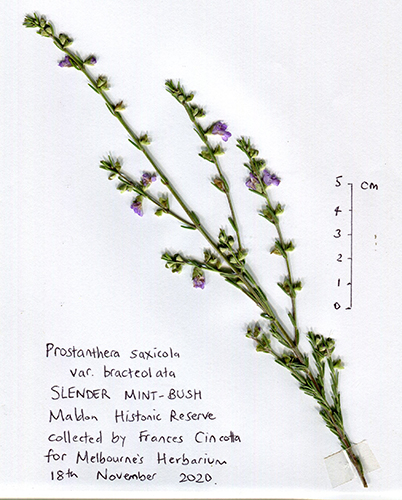
Two days later Bronwyn Silver and I went for a walk in the southern end of Castlemaine Diggings Heritage National Park and who should we see? Two more slender Mintbush plants! Both are on same (south) side of Wewak Track, not right on the edge but about 5 m into the bushland. It is in Glenlyon district, in Shire of Hepburn. If you start at the west end of Wewak Tk, where it comes off Porcupine Ridge Rd and go 800m along Wewak Tk traveling SE and crossing Sebastopol Creek, the first specimen is on the right, and the second is 100m further along, and then it is 100m further to the intersection with Loop Track. So both specimens in the 1km stretch of Wewak Track that is between Porcupine Ridge Rd and Loop Track, south of Sebastopol Creek.
As there are now 2 locations to find this plant in our district I think it is worth an entry on the Castlemaine Flora website https://castlemaineflora.org.au. I wonder how such small, isolated populations survive? They are about 25km apart as the raven flies.
- Slender Mint-bush. Maldon Historic Reserve. Photo by Frances Cincotta, 18 November 2020
- Slender Mint-bush. Maldon Historic Reserve. Photo by Frances Cincotta, 18 November 2020
- Slender Mint-bush. Near Wewak Track. Photo by Bronwyn Silver, 20 November 2020
This post is updated from the original. FOBIF mistakenly included a photo of a non local Westringia fruticosa in the photo sequence above. The correct photo has now been inserted. Apologies to Frances.

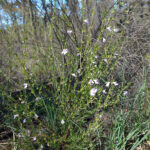
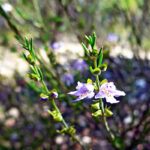
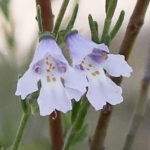
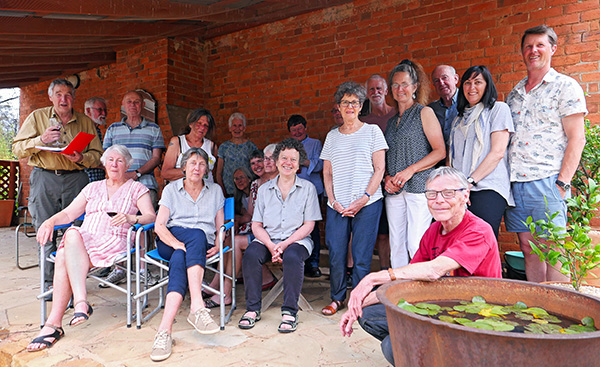
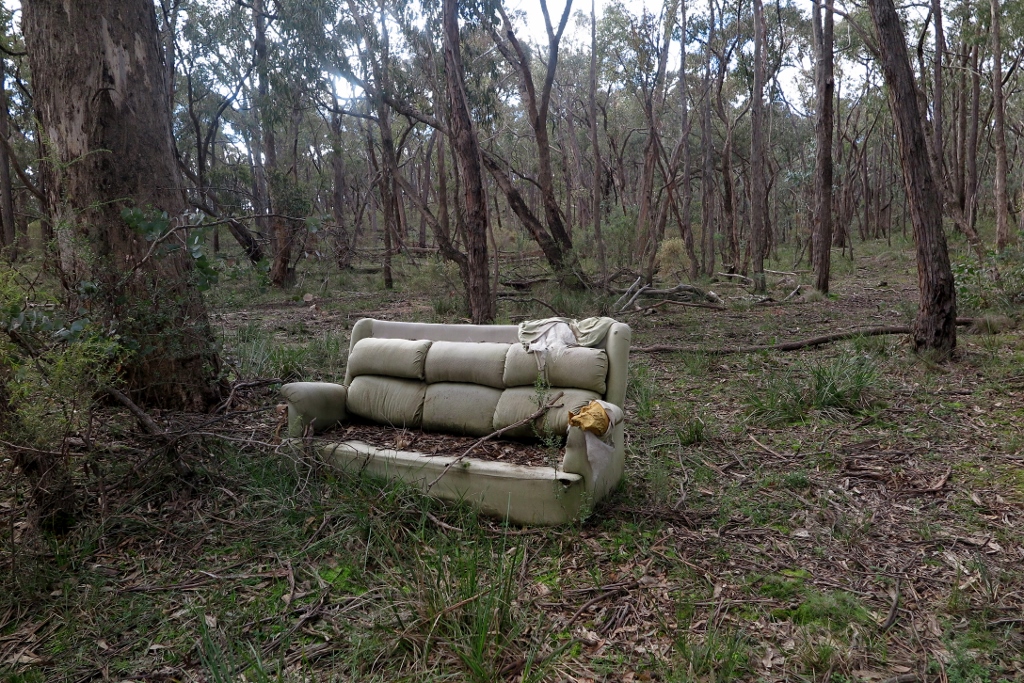
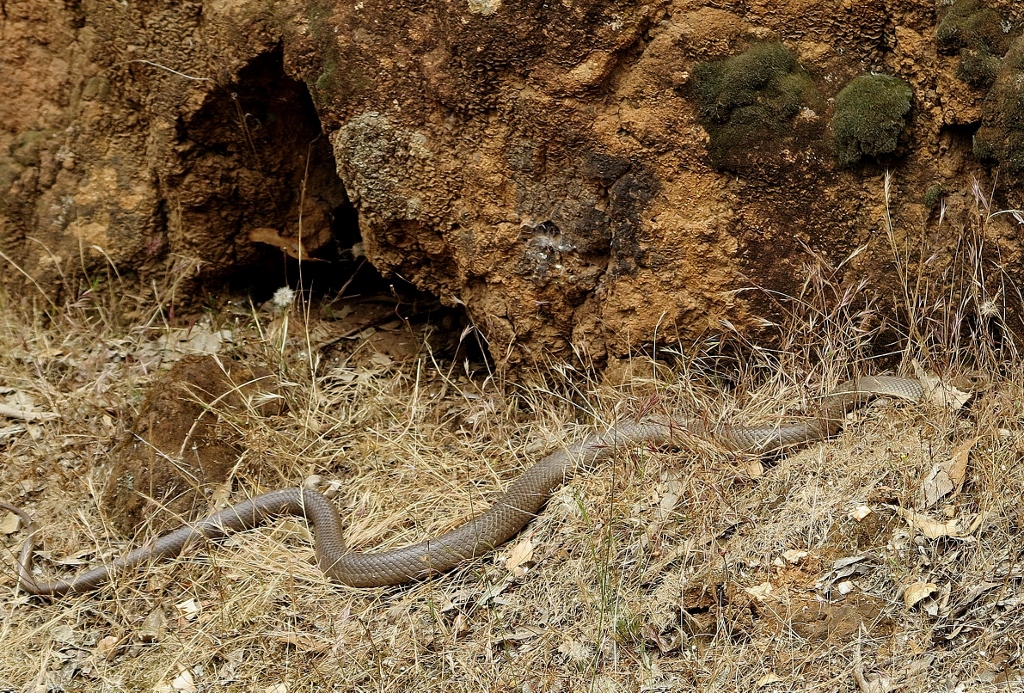
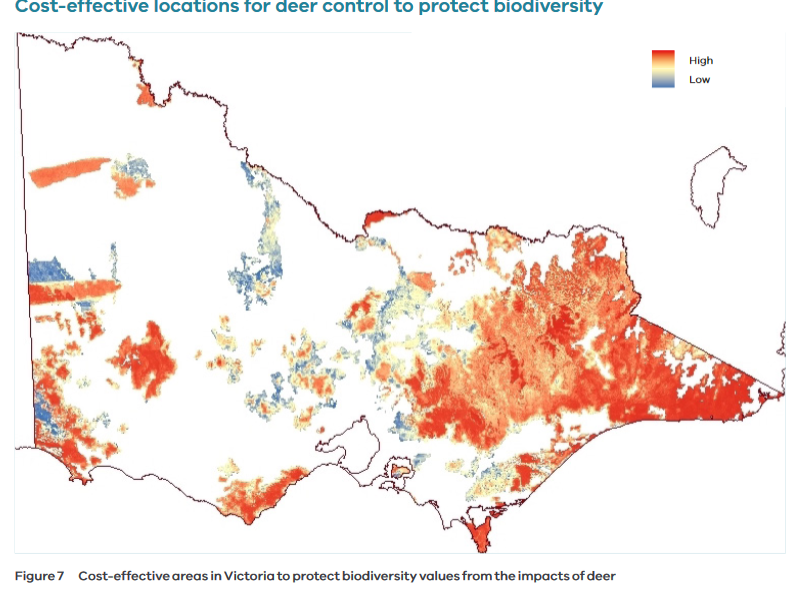
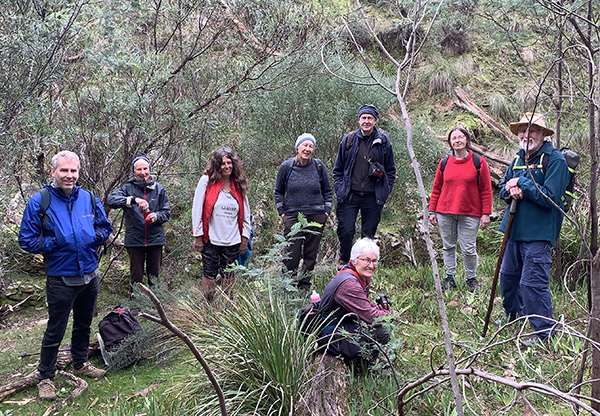



 Click on image for info/order page
Click on image for info/order page Click on image for info/order page
Click on image for info/order page Click on image for info/order page
Click on image for info/order page





















